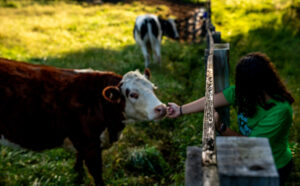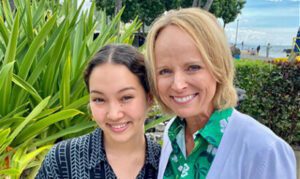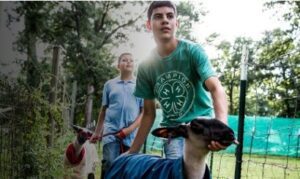The signing of this Act resulted in the establishment of 19 land-grant universities, which opened doors for African-American students who were given equal learning opportunities through scientific research and extension programs by higher learning institutions.
From the 1890 website:
“This act required each state to show that race was not an admissions criterion, or else to designate a separate land-grant institution for persons of color. Among the seventy colleges and universities which eventually evolved from the Morrill Acts are several of today’s historically Black colleges and universities (HBCUs).”
These colleges and universities, which represent about 17% of all HBCUs, are home to well-renowned past and present leaders. Many notable historical figures who played a major role in the development and advancement of the 1890 land-grant universities include Booker T. Washington and George Washington Carver (both of Tuskegee University).
Celebrating Success
The 1890 Land-Grant universities are “finding answers today and preparing for tomorrow,” through education, research, and programs designed to advance their communities and strengthen the knowledge of young people, families and future leaders. Much success can be attributed to the work of the 1890 land-grant system:
- “Tuskegee is mentoring beginning farmers to strengthen their ability to produce a quality product at the volume that attracts larger retailers such as Walmart and Whole Foods.” – Tuskegee University
- “UMES research is being used as the guide for the FDA in designing and implementing a Vibrio control plan in oysters.” – University of Maryland Eastern Shore
- “FVSU is using marginal soil to grow sweet sorghum for bioenergy with minimal outside inputs helping small farmers economically.” – Fort Valley State University
- “Southern University’s obesity prevention program: 26 people lost a total of up to 62 pounds, within 24 weeks by drinking shakes containing whey protein and resistant starch, and incorporating exercise and nutrition education.” – Southern University
- “WVSU’s community and youth-based efforts are repurposing abandoned lots into demonstration gardens that expose inner-city youth to sustainable agriculture and economic development.” – West Virginia State University
- “AAMU: is using/developing technology to convert cooking oil wastes into biofuels available for rural communities, disaster relief efforts, or for use in developing countries.” – Alabama Agricultural and Mechanical University
These are just a few of many success stories from institutions that are committed to “serving the underserved and reaching the unreached.” (APLU) Most importantly, these institutions have adopted 4‑H programs, arming youth with leadership skills to help them thrive today and in the future, while empowering their families and peers to do the same.
- “Alcorn State University Extension Program (ASUEP) 2501 and 4‑H programs worked together to help four youth apply for USDA Farm Service Agency youth loans totaling $20,000 to purchase livestock. The youth have been able to work with their sponsor to learn more about their livestock and how they can expand their operation in the future.” – Alcorn State University
- “4‑H Programs: Through evaluations, they indicated that they learned more about their capabilities and now understand that education is the gateway to rewarding careers and lives.” – Delaware State University
- “The 4‑H Goat Giveaway Program has provided rural youth in more than 59 counties in Texas with more than 500 goats since its inception. The program not only provides an opportunity to gain experience raising goats and goat breeding, but it also promotes the development of important skills, such as responsibility and dedication.” – Prairie View A&M University
- “In Extension STEM, hundreds of youth have learned about science through animal and plant science day camps. In addition, youth have increased their knowledge of engineering and mathematics by learning how to build and program robots. – Tennessee State University
Celebrating Enrollment, Advancement and Innovation
While we celebrate the significance and impact of the 1890 land-grant universities, it is important to remember they are a part of a much larger HBCU system. These 106 institutions (all established before 1964) are making it possible for African Americans to advance in learning and in careers while advancing the world.
According to a 2013 discussion paper published by APLU, Repositioning HBCUs for the Future, over 335K students in the U.S. were enrolled in HBCUs in 2011, 83% of which are African American. Of the total student HBCU enrollment; 29% were enrolled at land-grant universities.
HBCUs are also making impactful contributions to the number of minorities receiving degrees and entering particular fields. In 2011, 32.6K bachelor’s degrees were awarded by HBCUs. More specifically, 22% of bachelor’s degrees earned by African Americans at HBCUs are in STEM fields.
“The National Science Foundation found that a third of all African American science and engineering doctorate recipients nationally completed their undergraduate education at an HBCU,” stated by the APLU. “In fact, African American students attending HBCUs are more likely to go to graduate or professional schools than African American students from other institutional types.”
When it comes to innovation, HBCUs are making major strides in groundbreaking research, with at least 100 patents being awarded to these universities. As of 2011, seven out of 18 institutions awarded patents are land-grants:
- Florida A&M (16)
- NC A&T (12)
- Tuskegee (2)
- Alabama A&M (1)
- Fort Valley State College (1)
- Alcorn State (1)
- Virginia State (1)
Universities Celebrate the 125th Anniversary of the Morrill Act of 1890




























